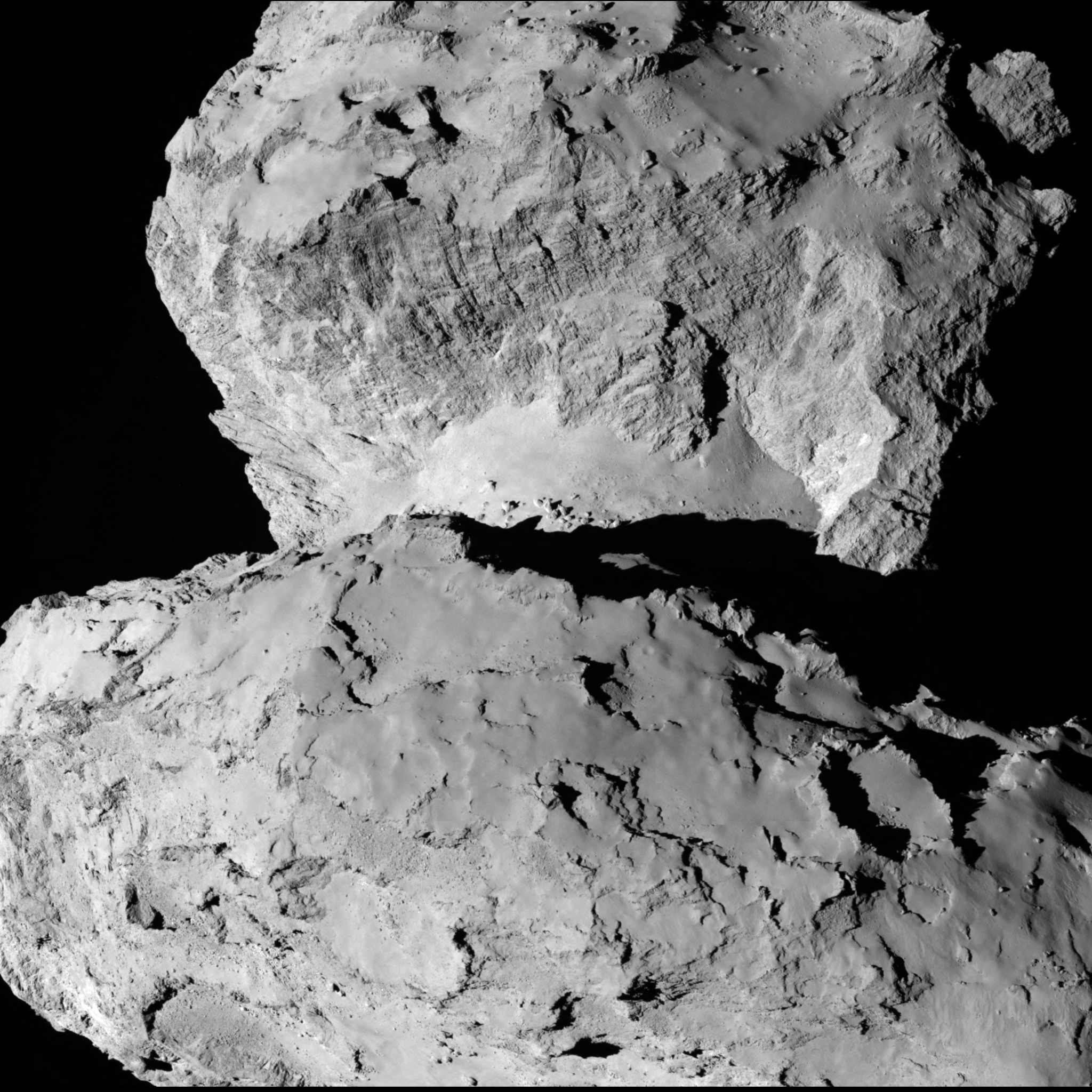Link. Didn't see a thread.
Edit -
Bonus picture. Saturn is by far the most photogenic planet and the most beautiful to look at.
The four images that make up this montage of comet 67P/Churyumov–Gerasimenko were taken on Sept. 26, 2014 by the European Space Agency’s Rosetta spacecraft. At the time, Rosetta was about 16 miles (26 kilometers), from the center of the comet.
In the montage, a region of jet activity can be seen at the neck of the comet. These jets, originating from several discrete locations, are a product of ices sublimating and gases escaping from inside the nucleus.
The overlapping and slightly dissimilar angles of the four images that compose the montage are a result of the combined effect of the comet rotating between the first and last images taken in the sequence (about 10 degrees over 20 minutes), and the spacecraft movement during that same time.
Launched in March 2004, Rosetta was reactivated in January 2014 after a record 957 days in hibernation. Composed of an orbiter and lander, Rosetta's objectives since arriving at comet 67P/Churyumov-Gerasimenko earlier this month are to study the celestial object up close in unprecedented detail, prepare for landing a probe on the comet's nucleus in November, and after the landing track the comet's changes through 2015, as it sweeps past the sun.
Comets are time capsules containing primitive material left over from the epoch when the sun and its planets formed. Rosetta's lander will obtain the first images taken from a comet's surface and will provide comprehensive analysis of the comet's possible primordial composition by drilling into the surface. Rosetta also will be the first spacecraft to witness at close proximity how a comet changes as it is subjected to the increasing intensity of the sun's radiation. Observations will help scientists learn more about the origin and evolution of our solar system and the role comets may have played in seeding Earth with water, and perhaps even life.
Rosetta is an ESA mission with contributions from its member states and NASA. Rosetta's Philae lander is provided by a consortium led by the German Aerospace Center, Cologne; Max Planck Institute for Solar System Research, Gottingen; National Center of Space Studies of France (CNES), Paris; and the Italian Space Agency, Rome. NASA's Jet Propulsion Laboratory in Pasadena, California, a division of the California Institute of Technology, manages the U.S. participation in the Rosetta mission for NASA's Science Mission Directorate in Washington.
Edit -
Bonus picture. Saturn is by far the most photogenic planet and the most beautiful to look at.
Saturn's many cloud patterns, swept along by high-speed winds, look as if they were painted on by some eager alien artist.
With no real surface features to slow them down, wind speeds on Saturn can top 1,100 mph (1,800 kph), more than four times the top speeds on Earth.
This view looks toward the sunlit side of the rings from about 29 degrees above the ringplane. The image was taken with the Cassini spacecraft wide-angle camera on April 4, 2014 using a spectral filter which preferentially admits wavelengths of near-infrared light centered at 752 nanometers.
The view was obtained at a distance of approximately 1.1 million miles (1.8 million kilometers) from Saturn. Image scale is 68 miles (109 kilometers) per pixel.





